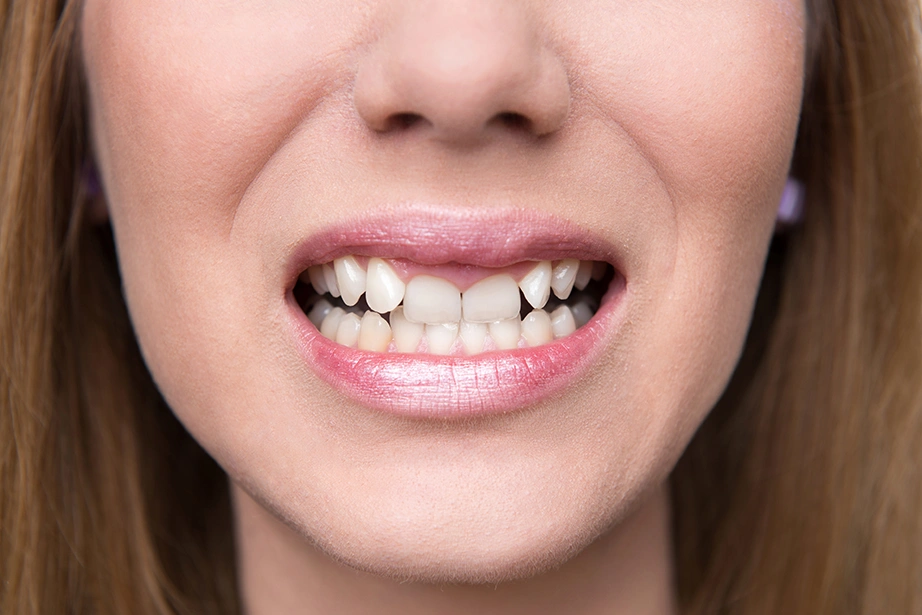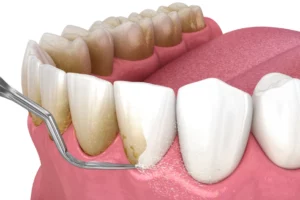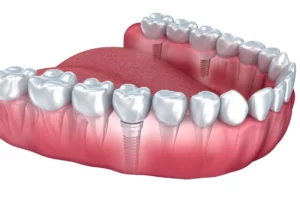Malocclusion, commonly known as misaligned teeth, is a dental condition where the teeth do not fit together properly. This misalignment can manifest in various forms, each with its unique characteristics. In this comprehensive guide, we will explore the types of malocclusion, the causes behind misaligned teeth, symptoms, and available treatments. Additionally, we’ll discuss preventive measures to maintain optimal dental alignment.
Types of Misaligned Teeth
Crowded Teeth
Crowded teeth occur when there is insufficient space in the jaw for all the teeth to align properly. This can result in overlapping, twisting, or rotation of teeth, leading to a crowded appearance.
Misaligned Teeth
Misaligned teeth refer to a general condition where the teeth do not align correctly, impacting both the appearance and functionality of the bite.
Crossbite
In a crossbite, the upper and lower teeth do not meet correctly, causing misalignment in the side-to-side relationship of the opposing teeth.
Overbite
An overbite occurs when the upper front teeth overlap significantly over the lower front teeth, potentially causing aesthetic and functional issues.
Underbite
Conversely, an underbite is characterized by the lower front teeth protruding further than the upper front teeth, leading to an uneven bite.
Open Bite
An open bite is identified by a gap between the upper and lower front teeth when the back teeth are clenched, affecting the overall bite and appearance.
Causes of Misaligned Teeth
Understanding the causes of misaligned teeth is essential for effective prevention and treatment. Several factors contribute to malocclusion, including:
Childhood Habits
Thumb-sucking, tongue thrusting, and prolonged use of pacifiers can impact dental development, leading to misaligned teeth.
Dental Issues
Extra teeth, lost teeth, impacted teeth, or abnormally shaped teeth can disrupt the natural alignment of the teeth.
Dental Appliances
Ill-fitting dental fillings, crowns, dental appliances, retainers, or braces can contribute to misalignment if not properly designed or maintained.
Injuries
Misalignment of the jaw due to fractures after a severe injury can result in malocclusion.
Tumors
Tumors affecting the mouth and jaw can impact the positioning of the teeth, leading to misalignment.
Categories of Malocclusion
Malocclusion is categorized into three main classes:
Class 1 Malocclusion
This is a mild form of malocclusion where the bite is normal, but individual teeth are misaligned.
Class 2 Malocclusion
Class 3 Malocclusion
Class 3 malocclusion is characterized by the lower jaw and teeth protruding ahead of the upper jaw and teeth, resulting in an underbite.
Symptoms of Misaligned Teeth
Recognizing the symptoms of misaligned teeth is crucial for early intervention. These may include:
- Abnormal alignment of teeth
- Abnormal appearance of the face
- Difficulty or discomfort when biting or chewing
- Speech difficulties, including a lisp (rare)
- Mouth breathing (breathing through the mouth without closing the lips)
- Inability to bite into food correctly (open bite)
Treatment for Misaligned Teeth
Several treatment options are available for misaligned teeth, depending on the severity of the condition:
Braces or Other Appliances
Orthodontic treatments, such as braces or clear aligners, can gradually correct misalignments by applying gentle pressure to the teeth.
Removal of Teeth
In some cases, removing one or more teeth may be necessary to create sufficient space for proper alignment.
Repair of Irregular Teeth
Addressing irregularly shaped or rough teeth may be part of the treatment plan to achieve optimal alignment.
Surgery
For severe cases, surgical intervention may be recommended to correct the position of the jaw and teeth.
How to Prevent Misaligned Teeth
While some causes of misaligned teeth are beyond our control, adopting certain preventive measures can help:
- Encourage proper oral habits in children, such as discouraging thumb-sucking.
- Maintain regular dental check-ups to identify and address issues early.
- Wear appropriate mouthguards during sports activities to prevent injuries.
Get a Straighter Smile with Our Orthodontic Dental Team in Thousand Oaks, Northridge, and Beverly Hills, CA!
If you’re seeking a straighter, healthier smile, our expert orthodontic dental team at Smile Boutique in Beverly Hills, Northridge, or Thousand Oaks, CA, is here to help. Schedule a consultation to explore personalized solutions for your misaligned teeth and embark on the journey to a confident, well-aligned smile.




